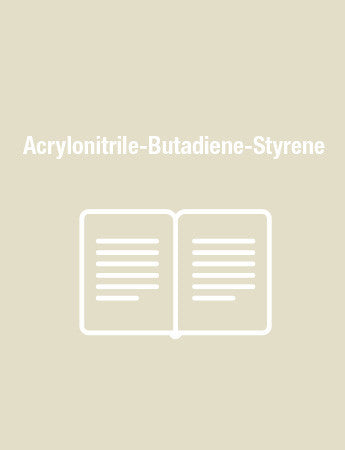Additive Migration from Plastics into Foods
Plastics are now being used on a large scale for the packaging of fatty and aqueous foodstuffs and beverages, both alcoholic and non-alcoholic. This is evident for all to see on the supermarket shelves, margarine is packed in polystyrene tubs, beer is packed in PVC bottles and meats and bacon in shrink-wrap film. Foods are also increasingly being shipped in bulk, in plastic containers. Additionally, there is the area of use of plastics utensils, containers, and processing equipment in the home and during a bulk preparation of food in producing factories, at home and in restaurants and canteens.
Thus it is likely that some transfer of polymer additives will occur - adventitious impurities such as monomers, oligomers, catalyst remnants and residual polymerization solvents and low molecular weight polymer fractions - from the plastic into the packaged material with the consequent risk of a toxic hazard to the consumer. The actual hazard arising to the consumer from any extractable material is a function of two properties, namely, the intrinsic toxicity of the extracted material as evaluated in animal feeding trials (not dealt with in this book) and the amount of material extracted from the polymer which enters the packed commodity under service conditions, i.e., during packaging operations and during the shelf life of the packaged commodity at the time of the consumption.
This book covers all aspects of the migration of additives into food and gives detailed information on the analytical determination of the additives in various plastics. It will be of interest to those engaged in the implementation of packaging legislation, including management, analytical chemists and the manufacturers of foods, beverages, pharmaceuticals and cosmetics and also scientific and toxicologists in the packaging industry.
Thus it is likely that some transfer of polymer additives will occur - adventitious impurities such as monomers, oligomers, catalyst remnants and residual polymerization solvents and low molecular weight polymer fractions - from the plastic into the packaged material with the consequent risk of a toxic hazard to the consumer. The actual hazard arising to the consumer from any extractable material is a function of two properties, namely, the intrinsic toxicity of the extracted material as evaluated in animal feeding trials (not dealt with in this book) and the amount of material extracted from the polymer which enters the packed commodity under service conditions, i.e., during packaging operations and during the shelf life of the packaged commodity at the time of the consumption.
This book covers all aspects of the migration of additives into food and gives detailed information on the analytical determination of the additives in various plastics. It will be of interest to those engaged in the implementation of packaging legislation, including management, analytical chemists and the manufacturers of foods, beverages, pharmaceuticals and cosmetics and also scientific and toxicologists in the packaging industry.
1 Additive Migration from Plastics into Packaged Commodities
2 Types of Polymers Used in Commodity Packaging
3 Non-Polymeric Components of Plastics
4 Determination of Antioxidants
5 Determination of Ultraviolet Stabilisers in Extractants
6 Determination of Plasticisers in Extractants
7 Determination of Organotin Thermal Stabilisers in Extractants
8 Determination of Organic Sulfur Compounds in Extractants
9 Determination of Polydimethyl Siloxanes in Extractants
10 Determination of Lubricants in Extraction Liquids
11 Determination of Monomers and Oligomers in Extractants
12 Analysis of Polymer Extraction Liquids Containing More Than One Migrant
13 Determination of Additives and their Breakdown Products in Extractants
14 Additive Migration Theory
15 Gas Barrier Properties of Food Packaging Plastic Films
16 Legislative Aspects of the Use of Additives in Packaging Plastics
17 Direct Determination of Migrants from Polymers into Foodstuffs
2 Types of Polymers Used in Commodity Packaging
3 Non-Polymeric Components of Plastics
4 Determination of Antioxidants
5 Determination of Ultraviolet Stabilisers in Extractants
6 Determination of Plasticisers in Extractants
7 Determination of Organotin Thermal Stabilisers in Extractants
8 Determination of Organic Sulfur Compounds in Extractants
9 Determination of Polydimethyl Siloxanes in Extractants
10 Determination of Lubricants in Extraction Liquids
11 Determination of Monomers and Oligomers in Extractants
12 Analysis of Polymer Extraction Liquids Containing More Than One Migrant
13 Determination of Additives and their Breakdown Products in Extractants
14 Additive Migration Theory
15 Gas Barrier Properties of Food Packaging Plastic Films
16 Legislative Aspects of the Use of Additives in Packaging Plastics
17 Direct Determination of Migrants from Polymers into Foodstuffs
Roy Crompton was Head of the polymer analysis research department of a major international polymer producer for some 15 years. In the early fifties, he was heavily engaged in the development of methods of analysis for low-pressure polyolefins produced by the Ziegler-Natta route, including work on high-density polyethylene and polypropylene. He was responsible for the development of methods of analysis of the organoaluminum catalysts used for the synthesis of these polymers. He was also responsible for the development of thin-layer chromatography for the determination of various types of additives in polymers and did pioneering work on the use of TLC to separate polymer additives and to examine the separated additives by infrared and mass spectrometry. He retired in 1988 and has since been engaged as a consultant in the field of analytical chemistry and has written extensively on this subject, with some 20 books published.




